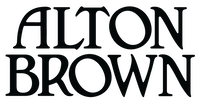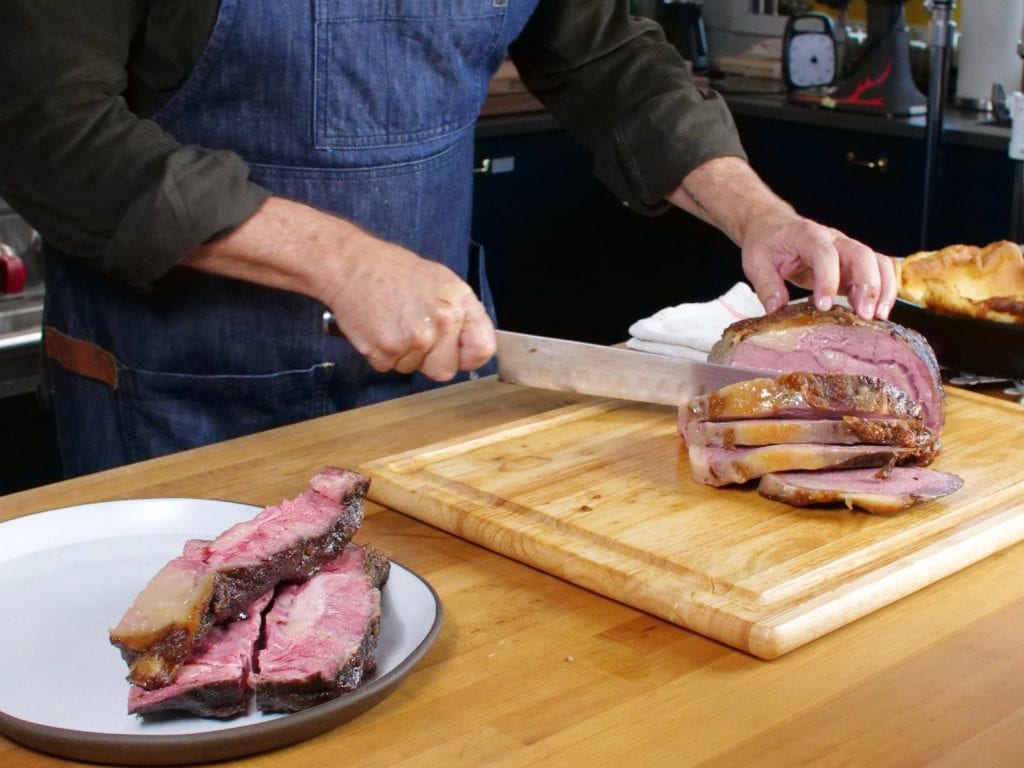
Holiday Standing Rib Roast and Yorkshire Pudding
I still say that if I were to only cook one hunk of steer a year, this would be the hunk I'd cook. It's a Christmas-Day standard in our house and I'm always tinkering with it. In this version, we trade out the oil rub for beef fat or even tallow, which adds beefy flavor while providing a more stable substrate for salt and pepper.

ACTIVE TIME: 15 minutes
TOTAL TIME: 1 day 4 hours 45 minutes
Yield: 6 to 10 servings
Software
- 1 (3- to 4-bone) standing rib roast, preferably from the loin end, with the fat cap in place, 7 to 10 pounds
- 2 tablespoons jarred beef fat or tallow (store bought or previously saved from cooking) See note
- 2 teaspoons per bone plus 1 1/2 teaspoons for the pudding
kosher salt - 1 tablespoon
freshly ground black pepper - 2 cups all-purpose flour
- 2 cups whole milk, at room temperature
- 4 large eggs, at room temperature
Specialized Hardware
- 6 feet Cheesecloth
- digital probe thermometer
- Food processor, blender, or immersion blender
- 12-inch Cast-iron skillet
Procedure
- Roll out 6 feet of cheesecloth then cut it in half. Lay the roast at the end of piece one and roll it up. Then turn 90 degrees and roll up in the second piece for total coverage. Place the wrapped roast on a cooling rack set inside a quarter sheet pan (to take up minimum fridge space). I usually tie it to the rack so that it's standing on its side. Leave it for 4-5 days.
- When you're ready to cook, remove the roast from the refrigerator, unwrap and discard the cheesecloth, then rub the roast with 2 tablespoons of the beef fat or tallow. (You can leave it on its rack/half sheet pan.) Salt the roast using 2 teaspoons per bone, then add the pepper. Leave uncovered at room temperature for 1 hour.
- Grab a digital probe thermometer. For best probe placement, look for the ridge in the fat cap near the ribs, go about an inch to an inch and a half above it and insert the probe in horizontally at least three inches, the target being the center of the eye muscle. If you hit bone, withdraw, move up another inch and try again. Set the alarm for 118 degrees F and position the roast on the lower middle rack in a cold oven. Crank the heat to 250 F and roast until the meat hits its target temperature, about 3 hours for a 3-bone roast of up to 4 hours for a 4-bone roast. (Temp is more important than the time here, as times will vary depending on the exact weight and shape of the roast.)
- When the thermometer alarm goes off, remove the roast from the oven, cover with foil, and let rest while preparing the pudding.
- Place your skillet on the lower middle rack in the oven and increase the oven temperature to 400 F. Once the roast has rested for about 10 minutes, set the roast on a cutting board and drain any drippings from the sheet pan into a heatproof liquid measuring cup. Return the foil covered roast to the pan.
- Measure out 2 tablespoons of the roast drippings and add to a food processor, blender, or place in a tall container if you are utilizing an immersion blender. Add the eggs, salt, milk, and flour and process until smooth, about 30 seconds.
- Carefully slide out the rack holding the hot skillet. Add and additional 2 tablespoons of drippings to the skillet and swirl to coat the bottom of the pan. Pour the batter into the skillet, then return to the oven and bake until the pudding is puffed and golden brown, about 30 minutes.
- Once the pudding has finished, remove it to a rack or trivet and cover loosely with foil. Crank the oven as high as it will go and return the roast to cook until the exterior is deeply browned, about 10 minutes. To serve, simply carve the roast and serve with the pudding. No need to rest the meat, as the interior will have rested before returning to the oven.
Note:
Tallow is a bit different from just rendered beef fat because it's made mostly from suet, which is fat around the kidneys which is harder and drier than other forms of beef fat. It's also refined before packaging.
Rendered beef fat is really just drippings you collect and heat to remove water, strain and store in the fridge.